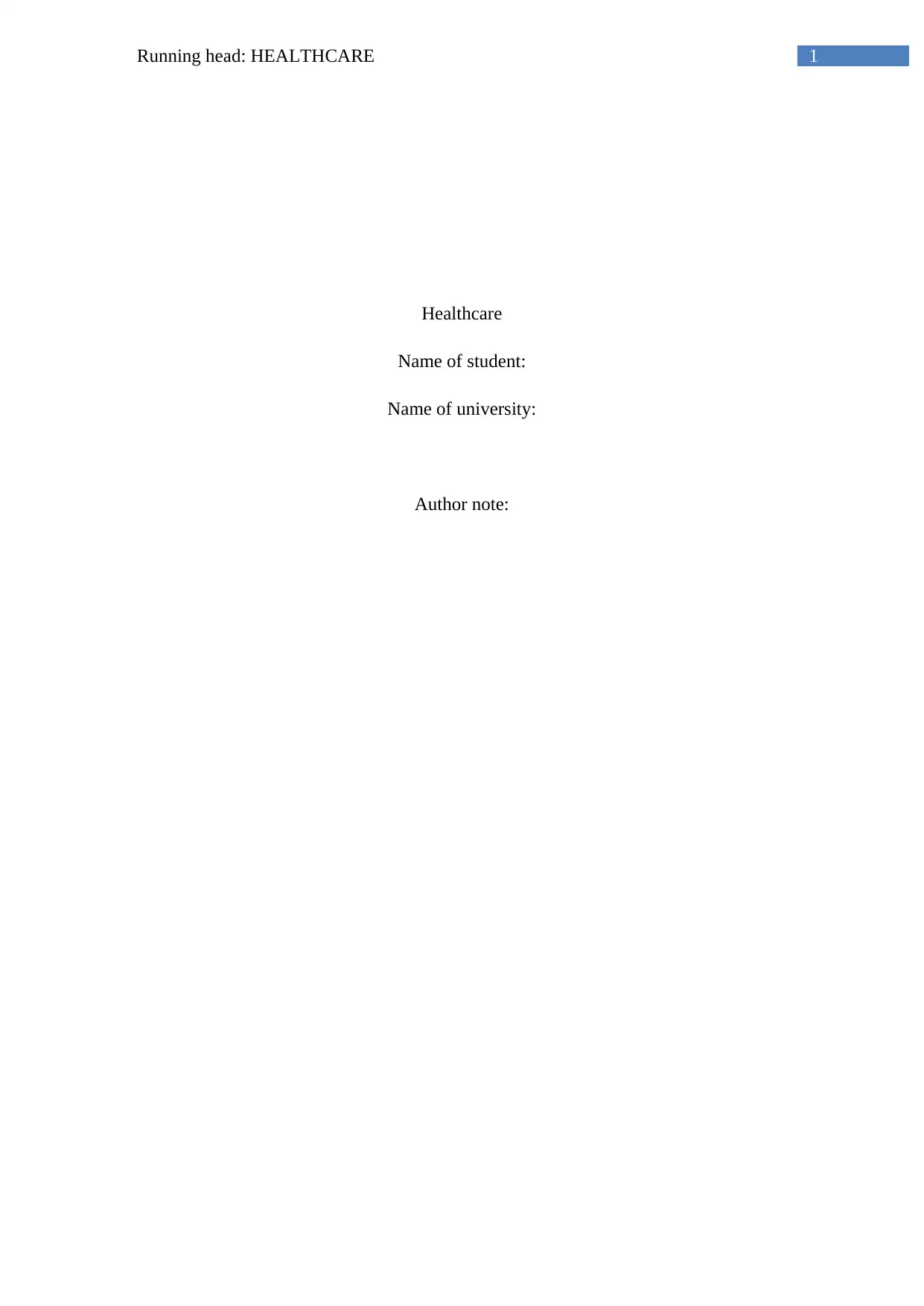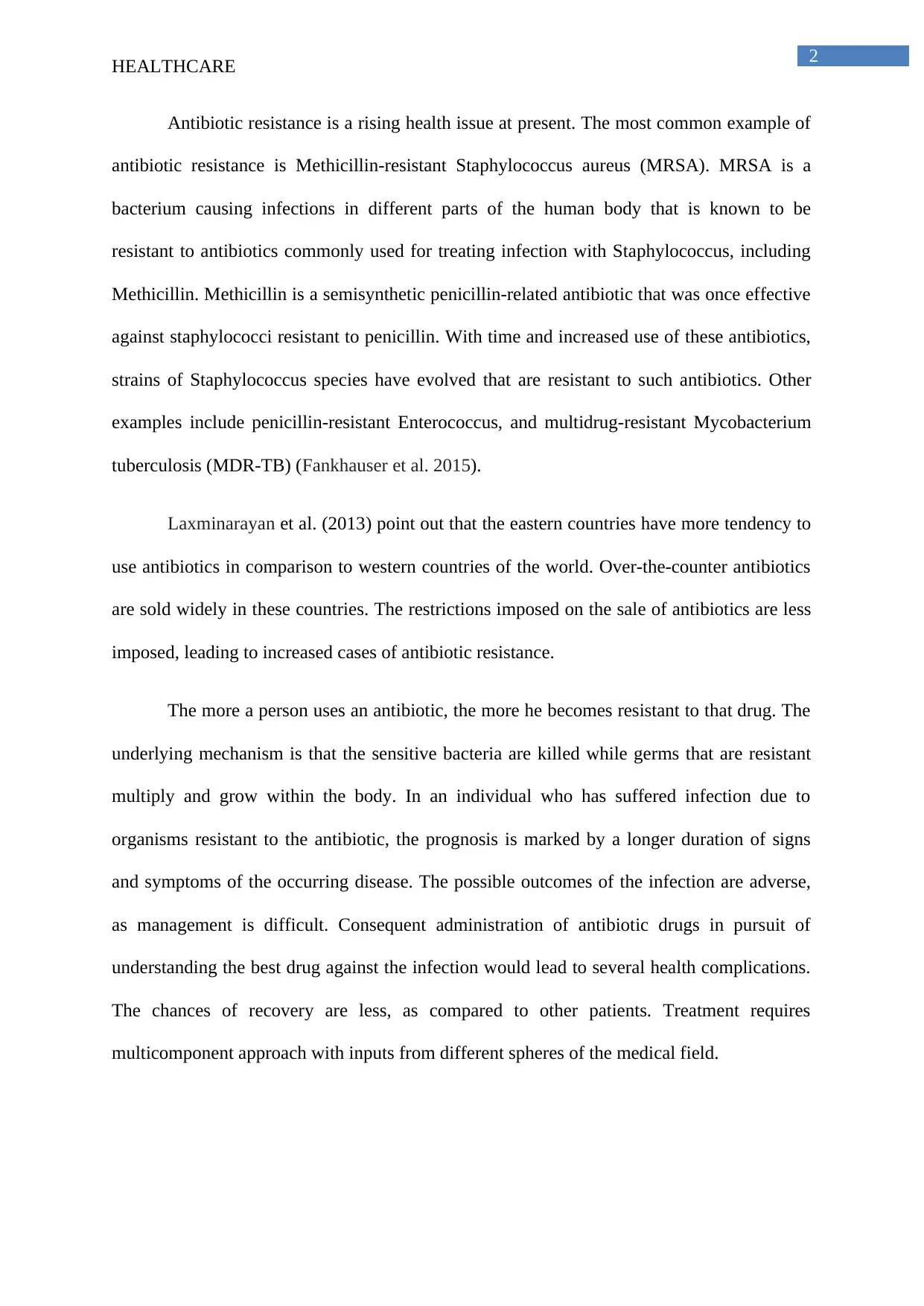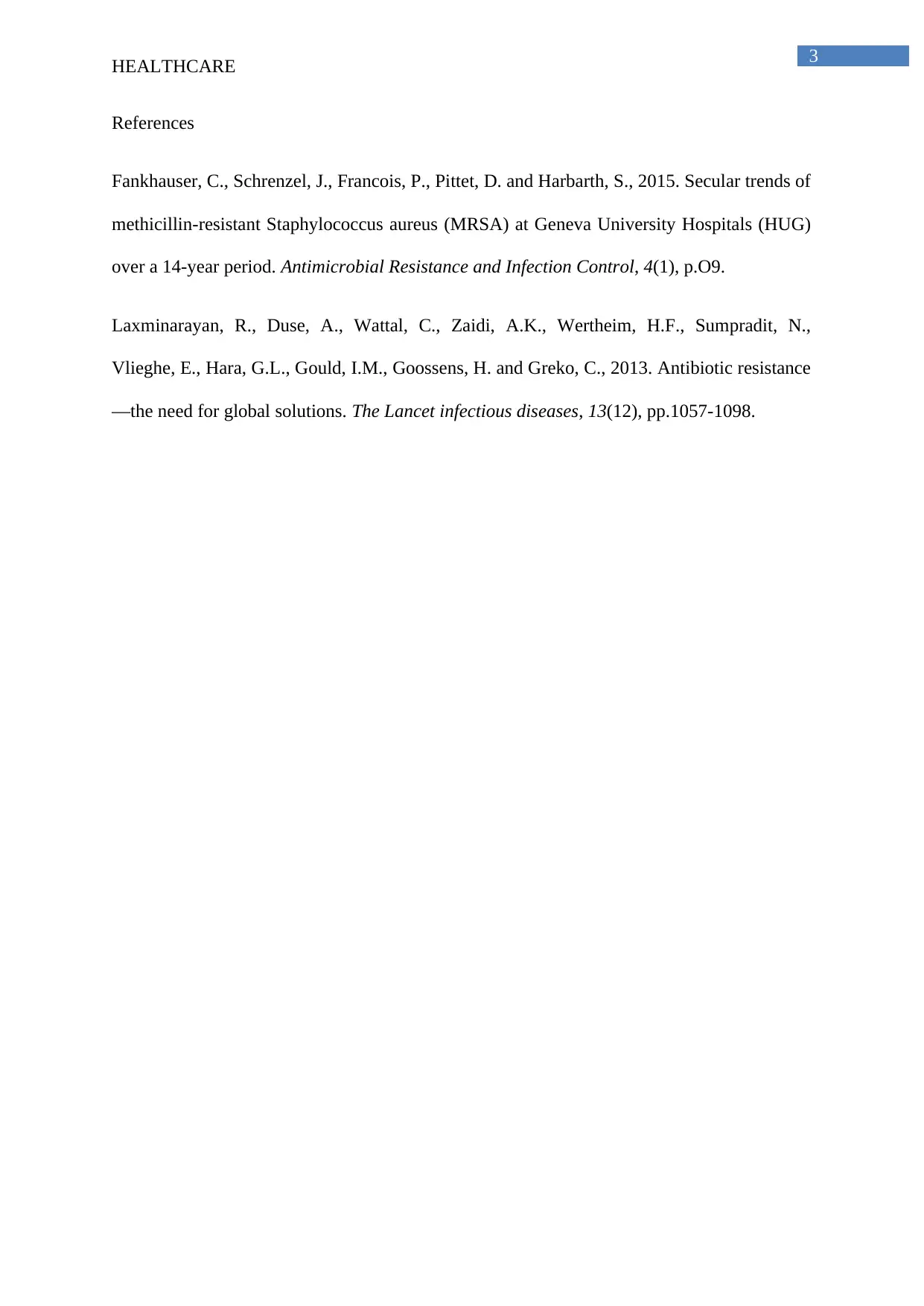Healthcare Report: Antibiotic Resistance, Causes, and Solutions
VerifiedAdded on 2020/05/08
|3
|447
|65
Report
AI Summary
This report focuses on the critical issue of antibiotic resistance in healthcare. It begins by highlighting Methicillin-resistant Staphylococcus aureus (MRSA) as a primary example of antibiotic resistance and discusses how the overuse of antibiotics contributes to the problem. The report references key research, including the work of Fankhauser et al. (2015) and Laxminarayan et al. (2013), to explain the mechanisms of antibiotic resistance and the impact of antibiotic usage, particularly in eastern countries where over-the-counter antibiotic sales are more prevalent. The report emphasizes that antibiotic resistance leads to prolonged illness, treatment complications, and reduced chances of recovery, necessitating a multi-faceted approach to patient care. The report concludes by underscoring the need for comprehensive strategies to combat antibiotic resistance and improve healthcare outcomes.
1 out of 3










![[object Object]](/_next/static/media/star-bottom.7253800d.svg)